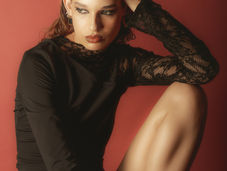Reviewing 'A Midsummer Night's Dream' by King's Shakespeare Society
- Hannah Sugars
- Apr 2, 2024
- 3 min read
"When the opportunity to see King’s Shakespeare Company arises again, I will seize it with both hands."

Despite having studied A Midsummer Night’s Dream in Year 9 some years ago, I still hadn't a coherent picture or much understanding of the plot when going to watch King’s Shakespeare Company's production, directed by Elektra Birchall. Frankly, following Shakespeare tends to be something of a tedious endeavour. However, in this particular instance, whilst I hadn’t the faintest idea what was going on sixty per-cent of the time, what I do know with some certainty is that this was the most captivating artistic interpretation of the play I have witnessed as yet. I left instilled with a conviction that Shakespeare wasn’t merely a misogynist with no regard for sexual ethics; he might have actually been quite a character, for his time. In earnest, this is a testament to the raw talent and sheer hard work of these individuals.
It is not only plain to see that King’s Shakespeare Company comprises a vast number of multi-talented individuals, but crucially that these certain individuals constitute a team over and above their personal skills. Teamwork is absolutely essential to any performance and everyone is important, no matter the level of responsibility they might hold. In this play, fairies had a significant stage presence, remaining onstage for scene after scene in spite of having few lines to deliver. Whether you are responsible for simply seeing that an actor receives their prop on cue or whether you have hundreds of lines to deliver, without each and every individual’s co-operation, there is no performance. A keen sense of teamwork held this performance together, and made for a fabulous one at that. This was particularly evident in Act 3, Scene 2, when the feud between Demetrius and Lysander comes to a head. In turn, Hermia and Helena are drawn into the confrontation. The dialogue and action was seamless, quite at odds with the nature of the scene.

What struck me as most impressive about this performance was that it was put together in just six weeks from start to finish. This only came to my attention at the very last minute, when the director made a brief speech before closing. I can honestly say that I wouldn’t have known. The characters were fully-formed and authentic. Having a vague recollection of the protagonists in A Midsummer Night’s Dream, it is safe to say that the actors of King’s Shakespeare Company brought new meaning and unique dimensions to their characters. The individuals were successful in bringing about comedic effect, characterised by wildly exaggerated desire and passionate fury. The sheer amount of laughter in the audience was a tribute to this success.
Whilst there were modern interjections – including the odd expletive or crude remark – these were implemented tactically and not at the expense of the overall narrative. This production would have passed in the 16th and 17th centuries and it positively exceeded my expectations today. These modern moments also served to bring me back, reminding me that these student actors were in fact born in this generation. I could appreciate just how brilliant a job they were doing, when compared to the ease with which modern slang rolls off the tongue. Reading and understanding Shakespearean English is tough at the best of times, so there was that added complexity that these actors handled well. The greatest performers are emotive and this was perhaps most apparent in Lani Perry’s performance as Helena. It was clear that the whole company had indeed taken the time to understand the words they were speaking; to then form each character and convey this to a modern audience is really rather impressive. In particular, Bottom (Harry Gillion) and Puck (Emma Littlefield) compellingly carried the narrative and seemingly had the most significant number of lines between them.

The staging was minimal, with what I presume was a tight student budget, but it nonetheless complemented the work of the actors. The enchanted forest appeared to be meticulously crafted and certainly looked the part in combination with the fabulous 12th century costumes. The staging was evidently well thought-out, an artistic vision very clearly brought to life.
In honesty, when an opportunity to see a Shakespeare production at The Globe next arises, the likelihood is that I won’t be taking it. When the opportunity to see King’s Shakespeare Company arises again, I will seize it with both hands.
Edited by Georgia Gibson, Theatre Editor.
























Comments